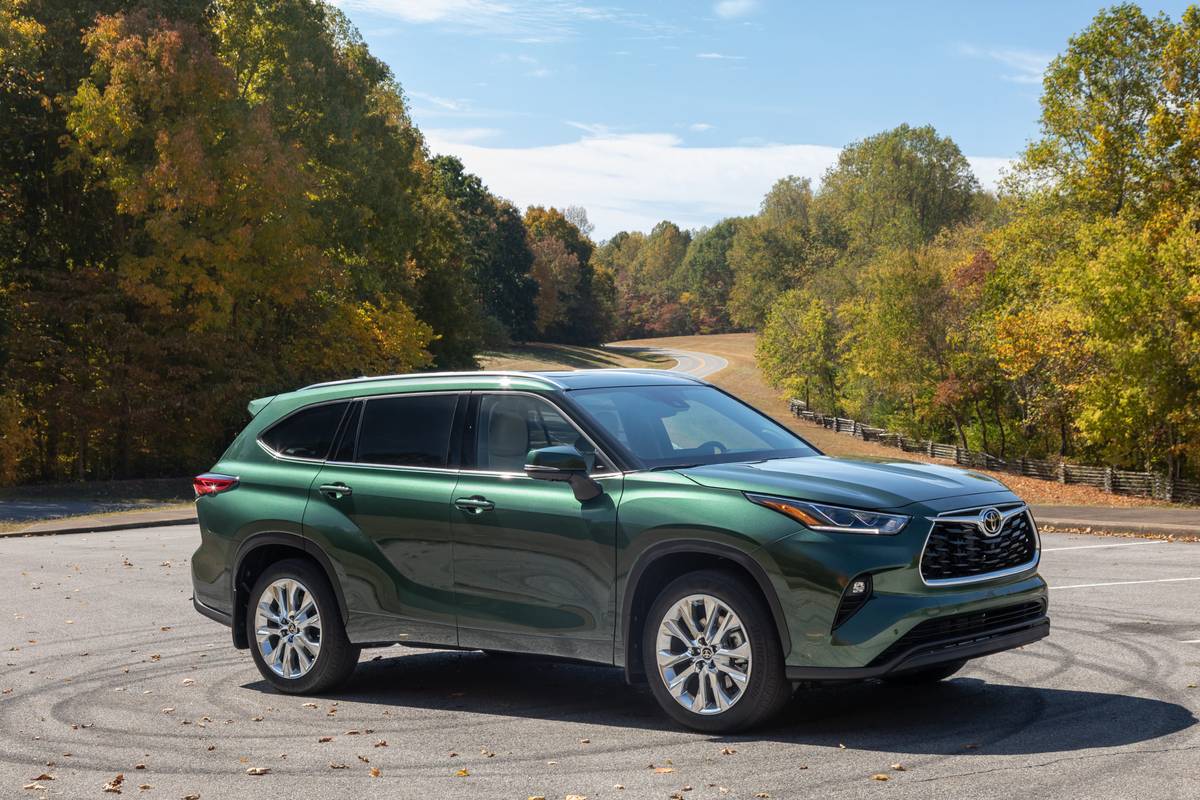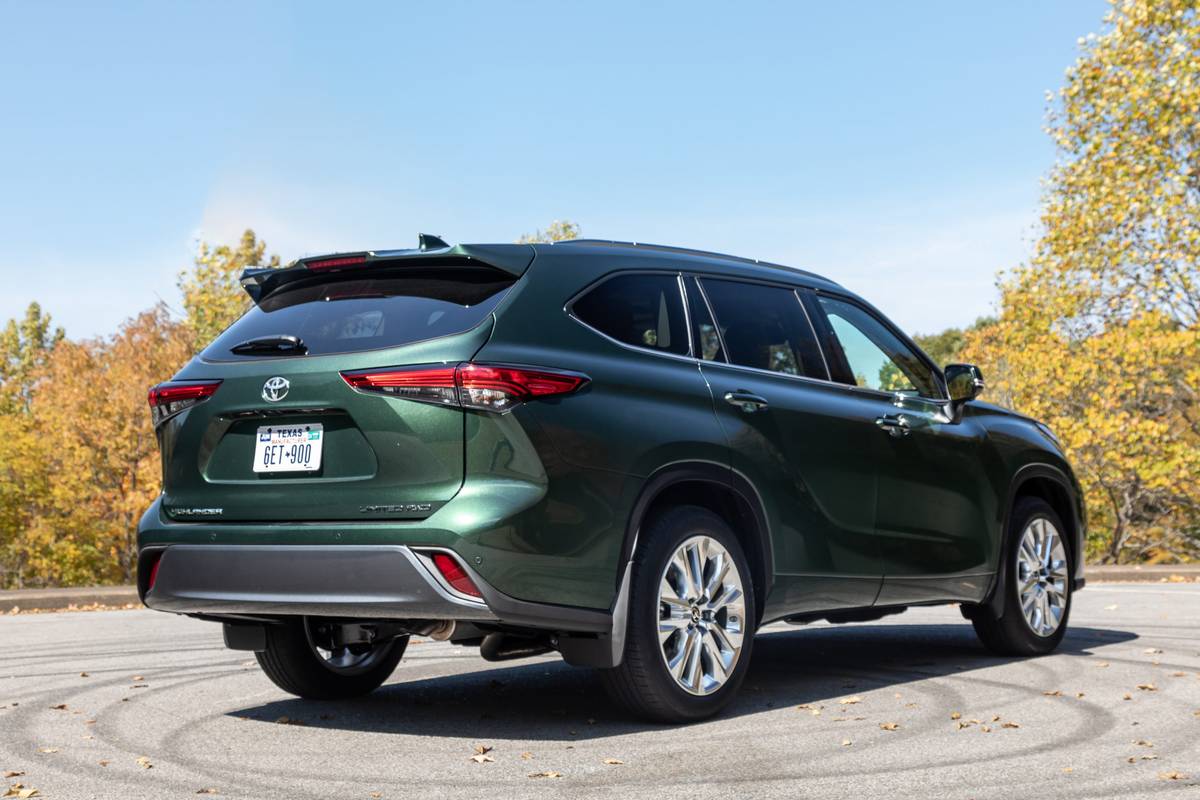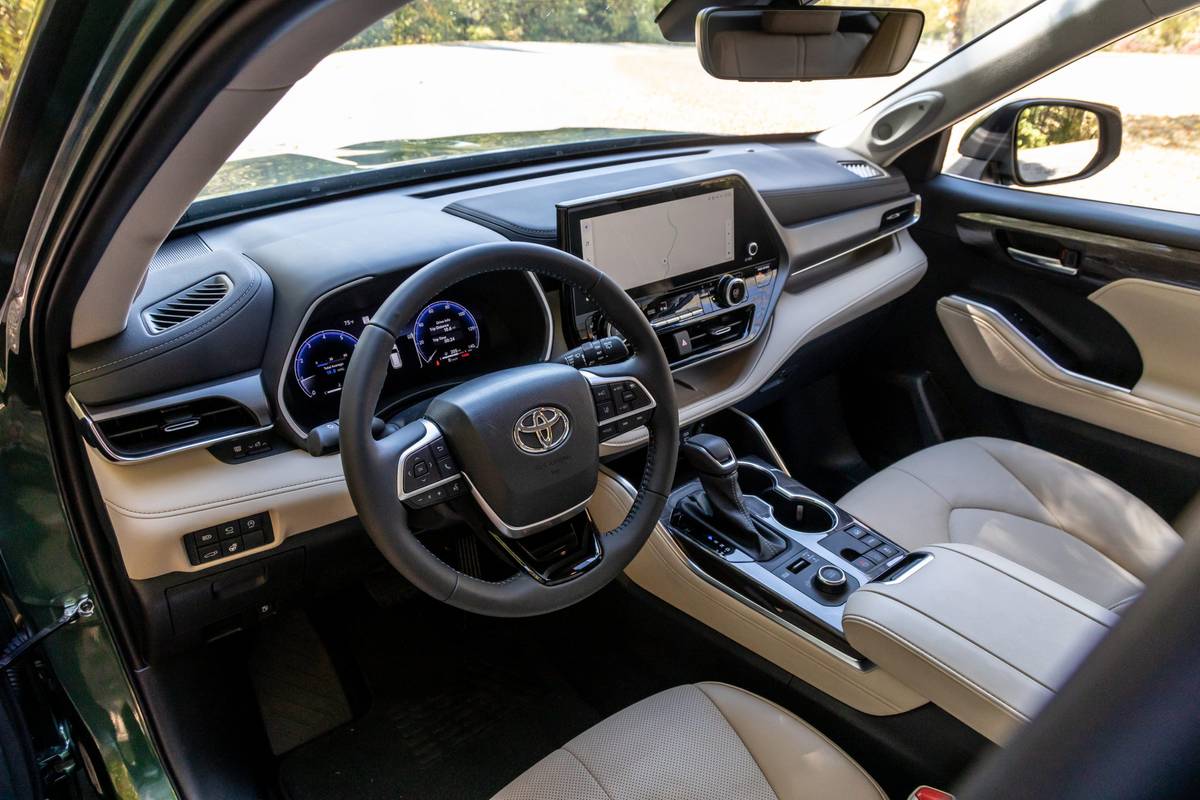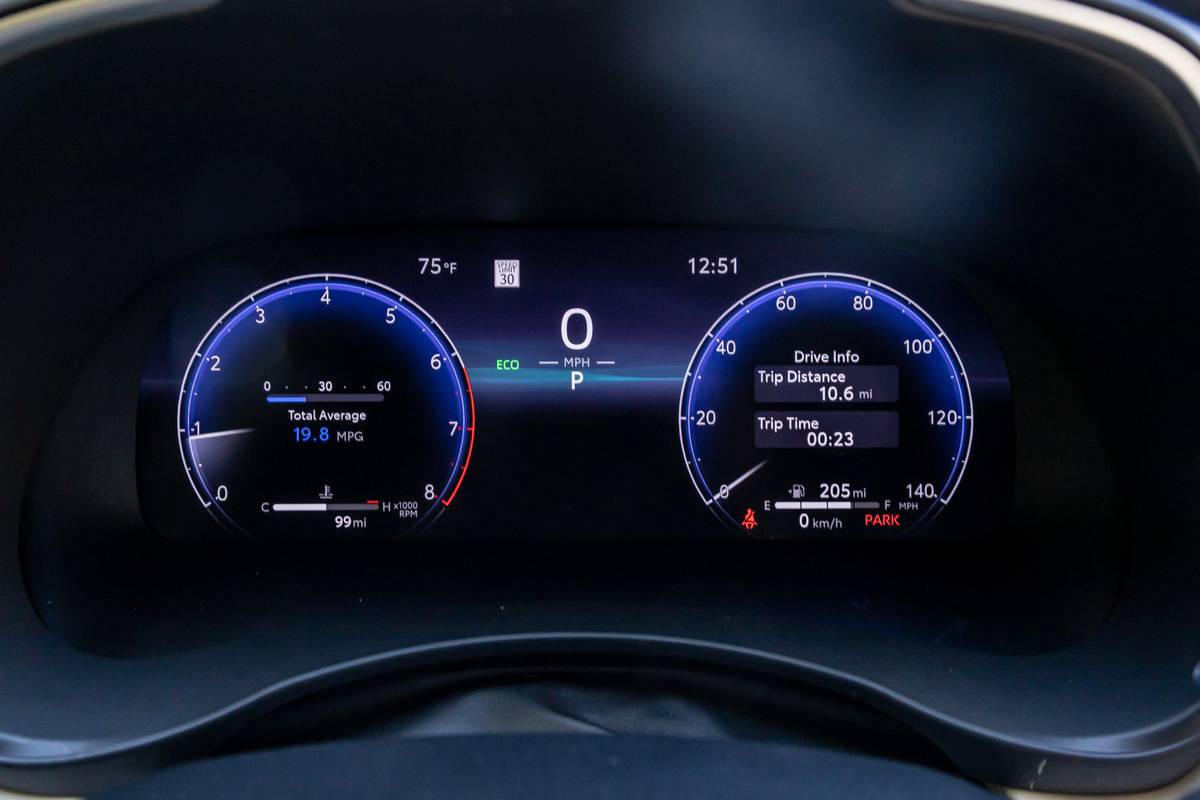
Big engines will be on the out-skis if the trends in the auto industry continue as they have been over the last decade, with V-8s and now V-6s starting to disappear and their replacements having fewer cylinders, as well as turbochargers, to keep power levels where customers want them, or even beyond. The latest example is the Toyota Highlander, which ditches the corporate V-6 engine in favor of a new turbocharged 2.4-liter four-cylinder for 2023. The new engine and some new interior multimedia screens — and a new Cypress Green paint color — are the extent of the changes for the popular Highlander for the new model year, but this is likely enough to keep it at the top of the sales charts for its category. We recently had a quick spin of the 2023 Highlander at a media event in Nashville, Tenn., and we were curious to see how the new turbo engine compares with the smooth V-6 that was popular in the big mid-size SUV.
Related: 2023 Toyota Highlander Ditches the V-6, Adds Tech, Raises Prices
Does the Engine Matter?
I used to think that it did, that customers and shoppers cared what engine propelled their vehicle and that it was a big decision-making factor for purchases, but that almost certainly varies from vehicle to vehicle. In a Dodge Challenger, yes, the engine matters. In a three-row family SUV that’ll never do stoplight burnouts? Unless they’re routinely towing or looking to maximize fuel economy, then I would posit that it really doesn’t matter to most people what’s under the hood. Customers are more likely concerned specifically with performance than actual engine specs. Is it quick enough? Is it quiet? Is it efficient? Is it reasonably priced?
The replacement of the 3.5-liter V-6 with the new turbo four is quite frankly not likely to be noticed by the typical Highlander shopper unless they’re particularly well-informed or trading in an old one for a new one. It’s likely to be even less of an issue after they drive it. The new engine makes 265 horsepower and 310 pounds-feet of torque, which is 30 fewer horsepower than the outgoing V-6 but a significant 47 more pounds-feet of torque. Given that this is a “boosted” engine, meaning it has forced air induction through the turbocharger, it has a different torque curve than the outgoing V-6. The torque is immediate and available at a wider range of rpm than with the old engine, so while the new Highlander isn’t any quicker than the previous model, it feels sprightly, peppy and responsive. It also doesn’t lose any towing ability, either, with the gas-only model still able to drag 5,000 pounds off the back bumper — plenty for a small camper, a pair of jet skis or a trailer full of motorcycles.
Still Drives Like a Highlander
The new engine fires to life with a less sonorous tone, sounding more like a diesel engine thanks to its direct-injection fuel system. It’s not as quiet or refined as the V-6, especially under full-throttle acceleration; it’s a fairly loud powerplant, with plenty of noise making its way into the cabin. But under normal around-town operation, it’s perfectly adequate for moving the big SUV around with ease and confidence. At highway speeds, it quiets down a bit and still provides useful, immediate passing power when called upon.
The engine is mated to an eight-speed automatic transmission, driving either the front or all four wheels, depending on options and trim level. The transmission shifts smoothly, but it will keep the Highlander in lower gears when you really put your foot on it, revving the heck out of the small four-cylinder. And that sets up the cabin for some significant engine drone, more than we remember from the V-6 version, and with an engine note that’s decidedly less pleasing.
So if it doesn’t provide much better acceleration or towing ability, why would Toyota make this switch? Well, it does get slightly better EPA-estimated fuel economy, according to Toyota, climbing to 25 mpg from the 2022 model’s 24 mpg. If you want to maximize fuel economy, you’ll still want to opt for the Highlander Hybrid, which combines a non-turbo 2.5-liter four-cylinder engine with an electric drive system to get an EPA-rated 36 mpg combined, unchanged from 2022. But the new engine also drops the gas-only Highlander’s emissions considerably, reducing nitrous oxides and non-methane organic gasses by up to 50% compared to the V-6, and lowering carbon-dioxide emissions, as well. So it may not provide you much of a different driving experience, aside from being a bit more punchy off the line and a bit more noisy when you floor it, but you can feel better about the fact that it’s considerably less polluting than the model it replaces.
The rest of the Highlander driving experience is unchanged from the previous model. It rides quite smoothly, with a nicely damped suspension that provides a good balance between confident (if numb) steering and minimal body roll. There’s not much in the way of road or wind noise, either, with the structure well-quieted from plenty of insulation (aside from the firewall, apparently, which lets in the engine noise). There’s plenty of space for passengers, front and rear, and while the third row is a bit on the small side, it’ll do just fine for families with kids.
New Screens Inside
The other big bit of news for the Highlander for 2023 comes in terms of its multimedia tech. There’s a new 12.3-inch digital instrument cluster, reconfigurable to a few different looks, and a new 12.3-inch touchscreen running the latest Toyota Audio Multimedia system, both of which come on the top two trim levels, Limited and Platinum; everything else gets an 8-inch touchscreen panel. The 2023 Highlander is the latest model in the Toyota lineup to get the new multimedia system as the company rolls it out across the showroom, and it is a decided upgrade from the old Entune system Toyota stuck with for way too long. It doesn’t provide the same level of functionality, customization or features as top systems from brands like Hyundai, Kia, Jeep or Ford, but I’d put it on par with other Japanese systems from Nissan or Honda. It’s certainly big and bright, and it’s great for using Apple CarPlay or Android Auto, as it uses the screen’s full real estate. I only wish the native systems made better use of all that display, providing a home screen that has multiple functions on it instead of requiring repeated changes between screens like phone, audio and navigation whenever you want to check something.
The central gauge cluster is also pretty slick, but like other Toyota models that now feature this digital display, it’s too dim. It disappears rather easily in bright sunlight, and despite it being recessed rather deeply into the hooded binnacle beyond the steering wheel, it can sometimes be hard to read. Ford’s systems in particular tend to be brighter and simpler, with the one in the Explorer a leader in this regard.
Still, the overall user experience in the 2023 Highlander is improved over the last one, and that kind of continual improvement is a solid factor in keeping the SUV atop the popularity charts. If you liked the last Highlander, it’s a pretty solid bet that you’ll like this slightly updated one, too. You’re not likely to miss the V-6 (if you even notice its departure), given that the turbo four works just as well, and the comfortable, versatile interior with its improved multimedia functionality is likely to also be a crowd-pleaser. Toyota took its non-minivan family hauler and made some solid improvements, and that’s not even taking into account the absolutely lovely Cypress Green paint that’s new for 2023.
More From Cars.com:
- Which 3-Row SUVs Offer Captain’s Chairs?
- 10 Mid-Size SUVs Ace New IIHS Crash Test, Popular Models Fall Short
- 2023 Toyota Highlander Swaps V-6 Power for Turbo Torque, Tech Upgrades
- Life with the Toyota Highlander: What Do Owners Really Think?
- Toyota Highlander: Which Should You Buy, 2021 or 2022?
Related Video:
We cannot generate a video preview.
Cars.com’s Editorial department is your source for automotive news and reviews. In line with Cars.com’s long-standing ethics policy, editors and reviewers don’t accept gifts or free trips from automakers. The Editorial department is independent of Cars.com’s advertising, sales and sponsored content departments.







































